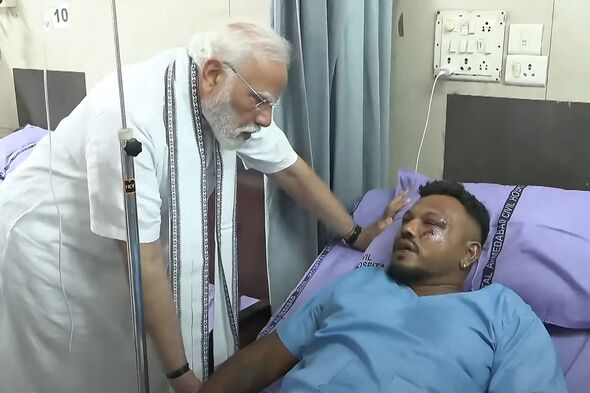Survivor of Air India Crash Describes Life After Tragedy

The sole survivor of the devastating Air India plane crash that occurred on June 12, 2023, in Ahmedabad, has opened up about the profound emotional toll the tragedy has taken on his life. Vishwashkumar Ramesh, a 39-year-old British national of Indian descent, lost 241 lives, including that of his brother, in the crash shortly after takeoff. Ramesh, who was thrown from the wreckage, described himself as “broken” and struggling with traumatic flashbacks that confine him to his bedroom.
In a poignant statement to The Telegraph, Ramesh reflected on his circumstances, saying, “God gave me life but took all my happiness. It completely brought down my family.” His brother, who he described as his “strength,” was among those who perished in the incident, leaving Ramesh grappling with profound grief. The emotional scars of the crash have also affected his ability to care for his young son, as he notes that he can only manage “three to four hours” of sleep each night.
The crash, which sent shockwaves through the aviation community, resulted in a massive fireball upon impact, as captured by security camera footage. The footage reveals the aircraft veering off course before descending rapidly and crashing into a building, where medical students were having lunch. The crash site showed significant damage, with the plane’s tail cone lodged near the building’s rooftop, leaving a web of cracks spiraling outward from the impact point.
Ramesh’s miraculous survival has garnered global attention, particularly due to the harrowing images of him walking barefoot from the wreckage. Despite his injuries and disorientation, he managed to reach an ambulance. His spokesperson, Radd Seiger, emphasized that Ramesh is “existing rather than living,” highlighting the severity of his mental and physical struggles in the aftermath of the crash. “I’ve never seen suffering like it,” Seiger noted, underscoring the family’s anguish since the tragedy.
While Air India has offered Ramesh an interim payment equivalent to what the victims’ families received, he has publicly criticized the airline for its lack of support, stating they are “hiding behind lawyers” and abandoning him. Seiger has called for direct engagement with Air India’s leadership, expressing the need for a meeting with the airline’s chief executive to discuss Ramesh’s situation. “Our appeal is for the chief executive of Air India to come and meet us, so that he can see for himself the terrible suffering that [Ramesh] and his family are enduring,” Seiger stated.
Air India has reportedly declined three requests for a meeting with Ramesh, instead offering him an invitation to meet with the airline’s parent company, Tata Group. The crash adds to a troubling history for Air India, which has experienced several tragic incidents throughout its operational history. Notably, in 2010, an Air India flight arriving from Dubai overshot the runway in Mangalore, resulting in 158 fatalities.
As investigations continue into the circumstances surrounding the crash, Ramesh remains in a state of emotional turmoil, reflecting on the loss of his loved ones. “Every day I’m struggling,” he stated. The long-term impact of this tragedy highlights the need for better support systems for survivors and the families of victims in the aviation industry, as well as the importance of transparency and accountability from airlines.






